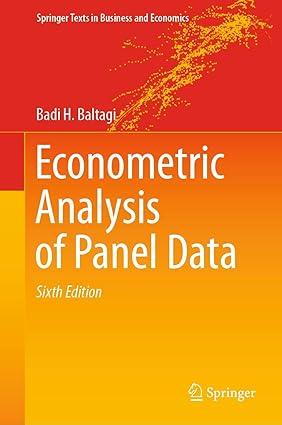This is based on the Appendix of Honor and Tamer (2006). Suppose that (left(y_{i 1}, y_{i 2},
Question:
This is based on the Appendix of Honoré and Tamer (2006). Suppose that \(\left(y_{i 1}, y_{i 2}, y_{i 3}\right)\) is a random vector such that \(P\left(y_{i 1}=1 / \mu_{i}\right)=p_{1}\left(\mu_{i}\right)\) and \(P\left(y_{i t}=1 / \mu_{i}, y_{i 1}, . ., y_{i t-1}\right)=F\left(\mu_{i}+\gamma y_{i t-1}\right)\) for \(t=2,3\), where \(p_{1}\left(\mu_{i}\right)\) is an unknown strictly increasing distribution function taking values between 0 and 1. Show that the sign of \(\gamma\) is identified. Consider the probabilities \(P\left[\left(y_{i 1}, y_{i 2}, y_{i 3}\right)=(0,1,0) / \mu_{i}\right]\) and \(P\left[\left(y_{i 1}, y_{i 2}, y_{i 3}\right)=(0,0,1) / \mu_{i}\right]\). Show that the sign of the difference of these two probabilities identifies the sign of \(\gamma\) ).
Step by Step Answer:






